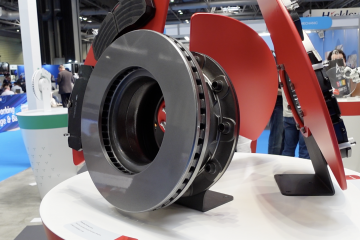The Independent Automotive Aftermarket Federation (IAAF) is calling on the government to make its decision on the MOT test frequency, following the end of its consultation period in March.
The lack of clarity on the matter is ‘completely unacceptable’ according to the industry body, which also states the delay is harmful for the supply-chain and the aftermarket as a whole.
The Department for Transport (DfT) launched a public consultation on the future of the MOT in Great Britain in February 2023, which looked at both modernising the test and the test frequency, with the Government’s preference for the first passenger car test to be taken at four years old.
Sources told Auto Repair Focus that the decision was expected to be announced in the last week of June. However, no reason has been given for the delay.
Mark Field, IAAF chief executive, said: “We are speaking to independent garages every day and they are really concerned for vehicle and driver safety, given the vehicle defects they see of all ages within their workshops.
“It is completely unacceptable that the automotive industry, which remained open to provide essential support throughout the COVID-19 pandemic, is being made to wait more than six months for an answer on its future and that of motorists’ safety.”
The consultation centred on changing the timing of a vehicle’s first test from three to four years. There were also questions regarding the switch to a 3-2-2 system. Other proposals included new checks on electric vehicles and ADAS to ensure these remain safe.
IAAF, along with UK AFCAR and multiple trade associations, have opposed such plans to extend the first test frequency, providing a substantial response to any Government plans.
Dangerous to extend the MOT
According to figures from the Driver and Vehicle Standards Agency (DVSA), around 300,000 vehicles fail their first test at three years. Moving the first test to four years under government proposals therefore poses higher safety risks to motorists and other road users.
Delaying vehicle inspections may also lead to higher repair costs for motorists who may not know that dangerous faults are developing with their vehicles.
Furthermore, as the number of new electric vehicles on UK roads is increasing, these are just as likely to fail the first MOT test, underlining the importance of safeguarding the current test regime. DVSA data shows that the failure rate on tyres at first MOT of three years is higher on Battery Electric Vehicles (BEVs) than on diesel vehicles.
This is because BEVs are heavier than their internal-combustion engine counterparts, increasing the weight and therefore wear on tyres. Of all electric vehicles that fail their first MOT at three years, 57% fail on tyres, compared with 35% of diesel vehicles and 37% of petrol vehicles tested.
The IAAF is writing to the Government, calling on them to at least give an indication of their proposals following the MOT consultation.



